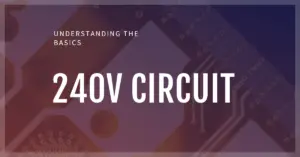Electric toasters have become a staple in many households, providing a convenient way to enjoy toasted bread, bagels, and pastries.
However, there are situations where the nearest electrical outlet may be too far away from your toaster. In such cases, you may wonder if it’s safe to use an extension cord with your electric toaster.
Using an extension cord with an electric toaster is generally safe, as long as certain precautions are taken. However, it is crucial to ensure that the extension cord is compatible with the wattage and amperage requirements of the toaster and do not use it permanently.
This article aims to explore the topic and provide you with the necessary information to make an informed decision.
Understanding Extension Cords
Extension cords are flexible cables designed to extend the reach of electrical devices by connecting them to power sources located at a distance.
They come in various lengths and types, offering different features and capabilities to suit specific needs.
It is essential to have a basic understanding of extension cords before considering their use with electric toasters.
Safety Considerations
When it comes to using extension cords with electric toasters, safety should be the primary concern. Several factors need to be taken into account to ensure the safe operation of both the toaster and the extension cord.
Wattage and Amperage Requirements of Electric Toasters
Electric toasters typically have a specific wattage and amperage rating specified by the manufacturer. These ratings indicate the amount of power the toaster requires to function correctly.
It is crucial to understand the power requirements of your toaster to determine if it can be safely used with an extension cord.
Extension Cord Compatibility with Electric Toasters
Not all extension cords are suitable for use with electric toasters. Some extension cords may not be able to handle the power load required by the toaster, leading to overheating and potential hazards.
It is important to ensure that the extension cord is compatible with the wattage and amperage requirements of the toaster.
Potential Hazards of Using Extension Cords with Toasters
Using an extension cord with an electric toaster can introduce certain risks if not done properly. Overloading the extension cord or using one that is damaged or of poor quality can result in overheating, short circuits, or electrical fires.
Understanding and mitigating these potential hazards is crucial to ensure the safety of your home and prevent accidents.
Proper Usage of Extension Cords with Electric Toasters
If you find it necessary to use an extension cord with your electric toaster, it is essential to follow best practices to minimize risks and ensure safe usage.
Selecting the Right Extension Cord
Choosing the appropriate extension cord for your electric toaster is crucial. Consider factors such as the cord’s length, gauge, and capacity to handle the power load of the toaster.
Opting for a heavy-duty extension cord with surge protection can provide an extra layer of safety.
Do not use an extension cord permanently
Using an extension cord as a permanent solution for powering your toaster is not ideal for several reasons.
Firstly, extension cords are designed for temporary or occasional use and may not be able to handle the consistent power load required by a toaster. Prolonged usage can lead to overheating, potential fire hazards, or damage to the cord itself.
Secondly, extension cords can pose tripping hazards if left in high-traffic areas for an extended period. They are not intended for permanent installation or to be concealed under carpets or rugs, which increases the risk of accidents.
Ensuring the Extension Cord Meets Safety Standards
To ensure the extension cord’s quality and safety, look for reputable brands that adhere to safety standards and certifications.
Avoid using old or damaged cords, as they may pose significant risks. Regularly inspect the extension cord for any signs of wear and tear.
Read also my article on my other site: Permanent Use of Extension Cords: A Dangerous Trend.
Proper Setup and Placement of Extension Cords
When setting up the extension cord, make sure it is placed in a safe location where it won’t be stepped on, pinched, or damaged.
Avoid running the cord across high-traffic areas or under carpets, as this can create tripping hazards and increase the risk of damage.
Regular Inspection and Maintenance of Extension Cords
Periodically inspect the extension cord for any signs of damage, such as frayed wires or exposed conductors.
If any issues are found, discontinue use immediately and replace the cord. Additionally, keep the cord clean and dry to prevent moisture-related problems.
Alternatives to Using Extension Cords
While using an extension cord may seem like a viable solution, it is always best to explore alternative options when it comes to powering your electric toaster.
Relocating the Toaster Near an Outlet
Consider rearranging your kitchen or countertop setup to position the toaster closer to an electrical outlet. This eliminates the need for an extension cord altogether, minimizing potential risks.
Utilizing a Power Strip with Built-in Surge Protection
If relocating the toaster is not feasible, using a power strip with built-in surge protection can provide a safer alternative to using an extension cord.
Ensure that the power strip can handle the wattage and amperage requirements of the toaster.
Conclusion
While it is possible to use an extension cord with an electric toaster, it is essential to prioritize safety and follow best practices to prevent accidents and hazards.
Understanding the power requirements, using the right extension cord, and regular maintenance are key to ensuring safe usage.
Whenever possible, consider alternative solutions such as relocating the toaster or utilizing a power strip. By prioritizing safety, you can enjoy your toasted treats with peace of mind.


